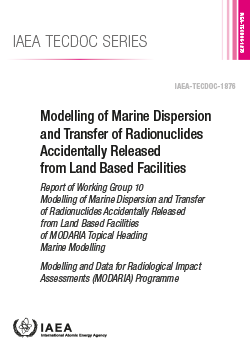Description
This publication describes and summarizes the work of the MODARIA (Modelling and Data for Radiological Impact Assessments) Programme Working Group 10. MODARIA was set up to continue the IAEA's activities in the field of testing, comparing and developing guidance on the application of models to assess radiation exposures to humans and radiological impacts on the environment. Different aspects of the MODARIA programme were addressed by ten working groups. The current publication presents the work undertaken by Working Group 10 on the modelling of marine dispersion and transfer of radionuclides accidentally released from land based facilities. Two marine dispersion scenarios were studied. These scenarios simulated dispersion of radionuclides in the Baltic Sea following the Chernobyl accident, and dispersion in the Pacific Ocean following the Fukushima Daiichi nuclear power plant accident. The publication details some general conclusions and presents a comparison of model performance when applied to the above scenarios. The difficulties of developing operative modelling systems for supporting decision making in cases of emergencies in highly dynamic environments are highlighted.
More Information on reusing IAEA copyright material.
Keywords
MODARIA, Modelling and Data for Radiological Impact Assessments, Marine Modelling, Modelling, Radionuclides, Nuclear Safety, Radiation Safety, Transport Safety, Waste Safety, Safety, Radiological Impact, Safety Assessment Process, Radiological Relevance, Routine Radionuclide Release, Accidental Radionuclide Release, Nuclear Waste Disposal, Regulatory Control, International Model Testing, Remediation of Contaminated Areas, Contamination, Uncertainties and Variability, Exposures and Effects on Biota, Accidental Land-Based Release of Radionuclides, Modelling Studies, Modelling Exercise, Applied Models, Baltic Sea, Pacific Ocean, Homogenization of Water Circulation, Hydrodynamic Fields, Quantitative Comparison, Homogenization of Water-Sediment Interactions, Tracer Dispersion



